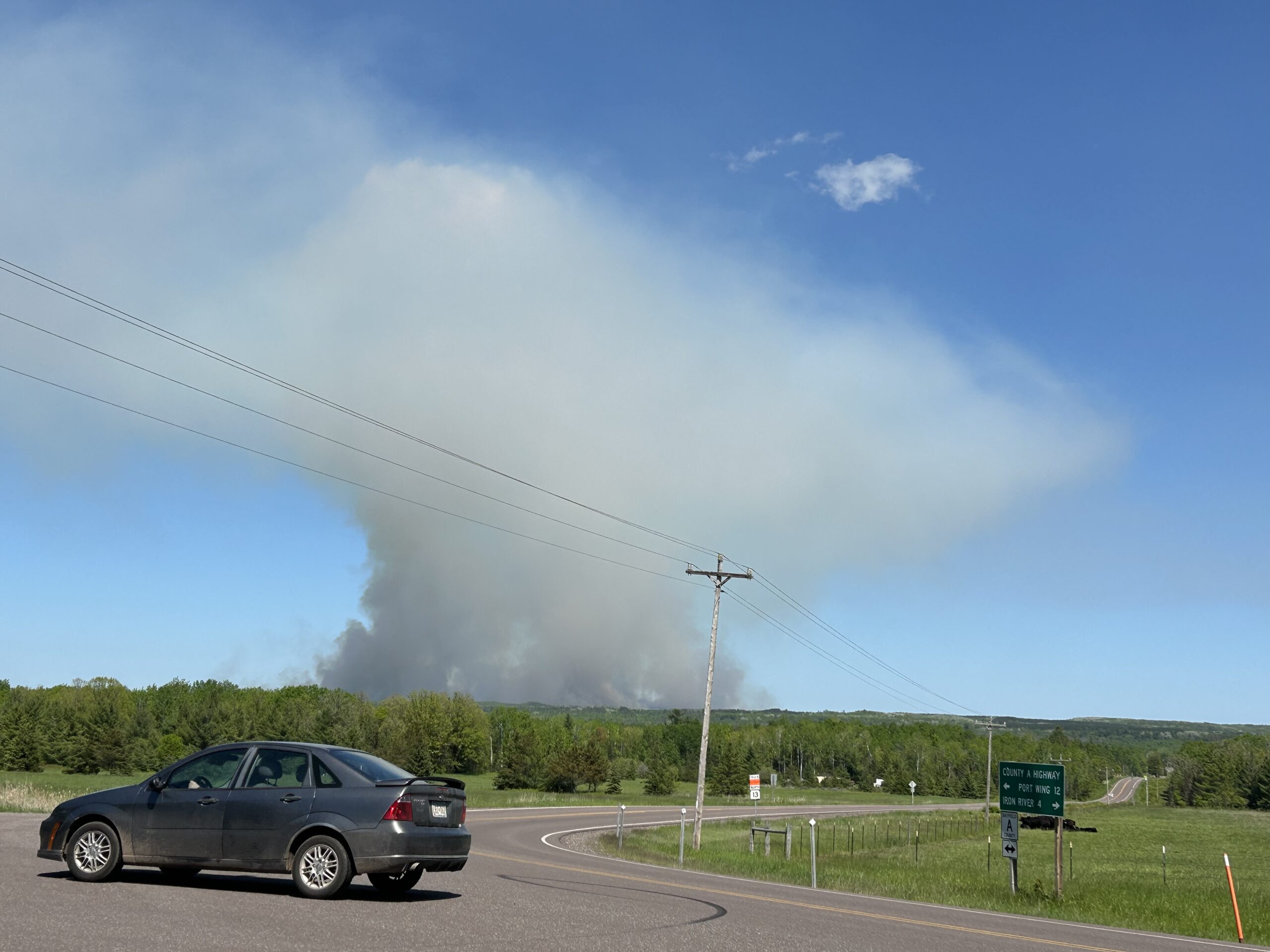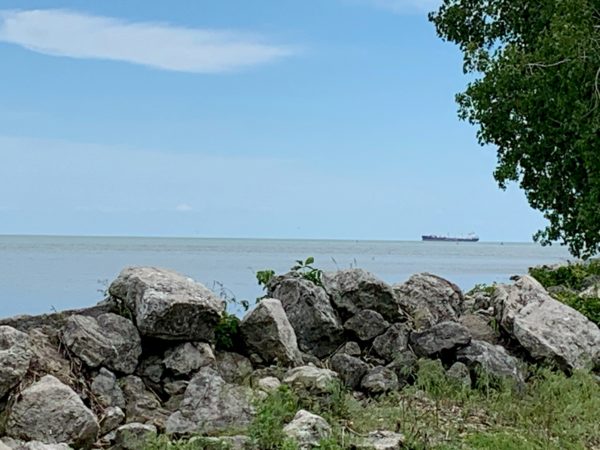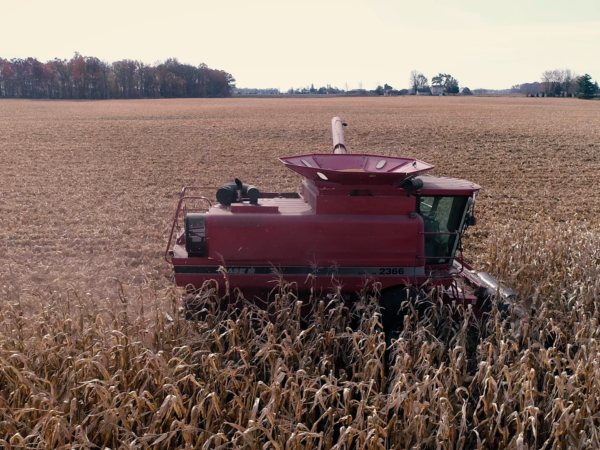
I was taking out the trash one evening this May when I noticed it. The sky had a reddish tint, and the air smelled faintly of smoke. Like many people across the Great Lakes region, I learned last summer to recognize the telltale signs of wildfire smoke. Amid a big year for wildfires in Canada, many of us got used to outbreaks of pollution caused by smoke from up north.
Last month’s smoky air got me wondering: are we in for more summers like 2023? Will the smell of smoke become as integral a part of warm weather in our region as barbeques and swimming in lakes?
According to the experts I spoke with, 2023 was an outlier, and that will likely continue to be the case. There were an unusual number of fires in Canada. It is extremely difficult to make accurate predictions about wildfires. That said, according to some experts, some conditions that make fires more likely will be exacerbated by climate change.
“Wildfires depend on having abundant dry fuel available,” said Loretta Mickley, co-leader of the Atmospheric Chemistry Modeling Group at Harvard. “So no matter how a fire may start, whether it’s through lightning, as many of these remote fires in Canada are started, or through carelessness, or a downed powerline, no matter what initiates a fire, the extent, the spatial spread of the fire, depends a lot on the dryness of the fuel and the availability of fuel. =Winds also play a role. So, very strong winds can push the fires fast down hills and change the size of the fire very rapidly.”
The dramatic increase in Canadian wildfires last year was in part due to changes in these conditions.
“Last summer, much of Canada was suffering from a combination of widespread drought and very, very high temperatures,” said Mickley.
Smoke from the middle and western parts of Canada went south to the U.S. Midwest, while the eastern U.S. got smoke from Ontario and Quebec, which also had a drought.
“The wind patterns were such that the smoke from those fires went right down the East Coast, where millions of people live, and that caused a big ruckus,” Mickley continued.
At least part of the increase in fire risk is because of climate change, although it there is some uncertainty about exactly how much. A warming climate could lead to drier conditions, for instance.
“It’s hard to tell how much is natural and how much is due to what we call ‘anthropogenic’ [human-caused] climate change,” said Mickley. “But given all that we know about the past, it does seem quite likely that these increases in fires in the western parts of North America are largely due to climate change.”
While the general trend appears to be towards more fires, Mickley and other experts cautioned that any given year is hard to predict.
“There is a lot of year-to-year variability in fires, and that’s just weather,” said Mickley. “You might have a cool summer, you might have a warm summer.”
Climate change could also lead to more extreme weather, both wet and dry, according to Lee Frelich, director of the Center for Forest Ecology at the University of Minnesota.
“Literally droughts alternating with floods,” he said. “Both the wet periods and the dry periods are more intense than they used to be.”
According to Matthew Taraldsen, a meteorologist at the Minnesota Pollution Control Agency, what happened in 2023 was unique.
“It got really warm, and the fire season started before the trees and the vegetation had an opportunity to really wake up from winter,” said Taraldsen, about what’s referred to as a “green up.”
Taraldsen said that the drought in 2023 also contributed to the fires:“This year, we’ve seen a few fires, but by and large, the green up has already occurred in most of Canada.”
Michael Griesinger is a meteorologist at the National Weather Service office in Chanhassen, Minnesota. He said that some of this year’s Canadian fires are actually fires that started last year, but kept smoldering during the winter. Smoke from one of these “overwinter” fires resulted in a day of poor air quality in Minnesota last month, according to Griesinger.
Weather in Michigan also contributed to the large amount of smoke in that state, according to Stephanie Hengesbach, a meteorologist with Michigan’s Department of Environment, Great Lakes, and Energy.
“We went through a period of time in June [2023] where we had cold fronts that kept dropping down into Michigan, originating from Canada, traveling southeast, dropping through our state,” she said. “Each time one of those fronts would come down, the winds were pulling that smoke with it.”
Satellites are used to monitor fire conditions by Taraldsen and his colleagues, although their accuracy depends on the weather. This year, that technique has allowed them to create smoke forecasts that are 2 or 3 days ahead, but it depends on the weather.
“It’s hard to predict wildfires, like when they’re going to happen, where they’re going to happen,” said Sherry Williams, a meteorologist at Environment and Climate Change Canada, a government agency. “You can just predict the antecedent conditions. You know, if it’s been really dry in a region, and they’re going to have thunderstorms moving in. A lot of wildfires are ignited by lightning. So you can think, oh, we’re having conditions that may lead to wildfires.”
Once a fire actually starts, then forecasting gets easier.
“In Canada, we have the FireWork forecast model, and it’s an air quality forecast model,” Williams said. “It will take inputs from where the wildfires are, using satellite imagery, and then calculations about how much fuel it is, what kind of fuel, whether it’s grass or trees.”
Trent Wickman is an air quality specialist who covers Minnesota, Michigan, Wisconsin, and Iowa for the US Forest Service. He said that he works with experts on meteorology and fire behavior to create forecasts for as long as a couple of days ahead. Once a fire starts, Wickman and his colleagues look at the plants in the area, as well as the weather, to predict where a fire might go.
Alex Oser, an air quality meteorologist at the Wisconsin Department of Natural Resources, said there are machines measuring air quality around the country. According to Oser, one way to keep up with air quality forecasts is to visit AirNow.gov.
“That is your gold standard for monitoring things nationally,” he said. “That’s always a good place to start, but this is sort of broad and national. A lot of states, such as Wisconsin, you’re going to be able to get a much more thorough, concentrated, focused forecast for your state if you’re able to locate the agency within the state that does the forecast.”
Examples of these agencies include the Wisconsin DNR, the Minnesota Pollution Control Agency, and the Michigan Department of Environment, Great Lakes, and Energy (EGLE).
“It’s difficult to know from year to year, but I would say it’s fair to expect smoke to be something that’s a more frequent part of our conversation or our seasonal planning,” said Lane Johnson, a forester at the Cloquet Forestry Center in Minnesota. “I don’t know really what this year would hold compared to last year, but I think, as a whole, if we were to generalize, the future is going to be more smoky.”
Catch more news at Great Lakes Now:
Surviving a metro Detroit summer in the climate change era
Michigan air quality unhealthy again Monday because of Canadian wildfires
Featured image: Photos of a prescribed burn in Wisconsin in May 2024. Courtesy Trent Wickman of the US Forest Service.



